Disclosure: Meeple Mountain received a free copy of this product in exchange for an honest, unbiased review. This review is not intended to be an endorsement.
Hunted: Kobayashi Tower is part of the Hunted line designed by Gabe Barrett. (You can read our review of Hunted: Mining Colony 415 here.) The Hunted games are all designed for solo or 2-player cooperative play and utilize a single flexible rules system. Each specific title then has its own setting and unique mechanics.
In the case of Kobayashi Tower, the setting is the titular tower. It’s been overrun by deadly terrorists who’ve taken the office workers hostage until their demands are met. By sheer luck, you managed to avoid getting rounded up with the others. Now it’s time to put your military background to the test as you tackle the toughest terrorists imaginable. (If you’re thinking that this sounds suspiciously like the plot of the film Die Hard, well, you’re absolutely right.)
The mechanical hook for Kobayashi Tower is its dice management element. The game comes with an array of dice (ranging from d6 to d12) that will help players determine the outcome of their actions. Generally this matters most when squaring off against bad guys, but it can also come up when exploring different rooms of the skyscraper.
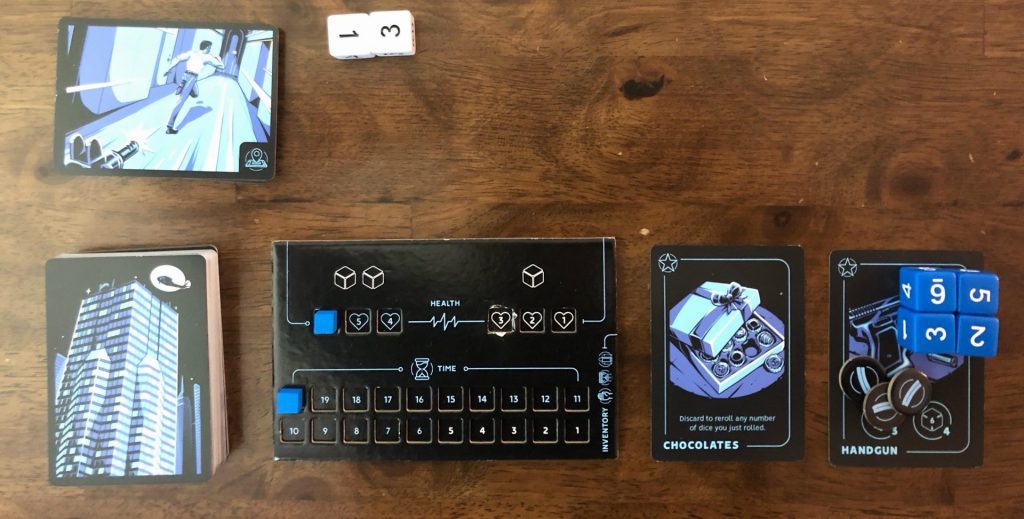
The Hungry and the Hunted
The games in the Hunted series share the same core gameplay. Each game comes with 2 decks: a Hunted deck and a Location deck. The goal is to advance through the former in order to reach a certain Location near the bottom of the latter. This must be done quickly and efficiently to preserve the player’s resources: Health, Time, and Ammo. If a player runs out of health or time they lose the game.
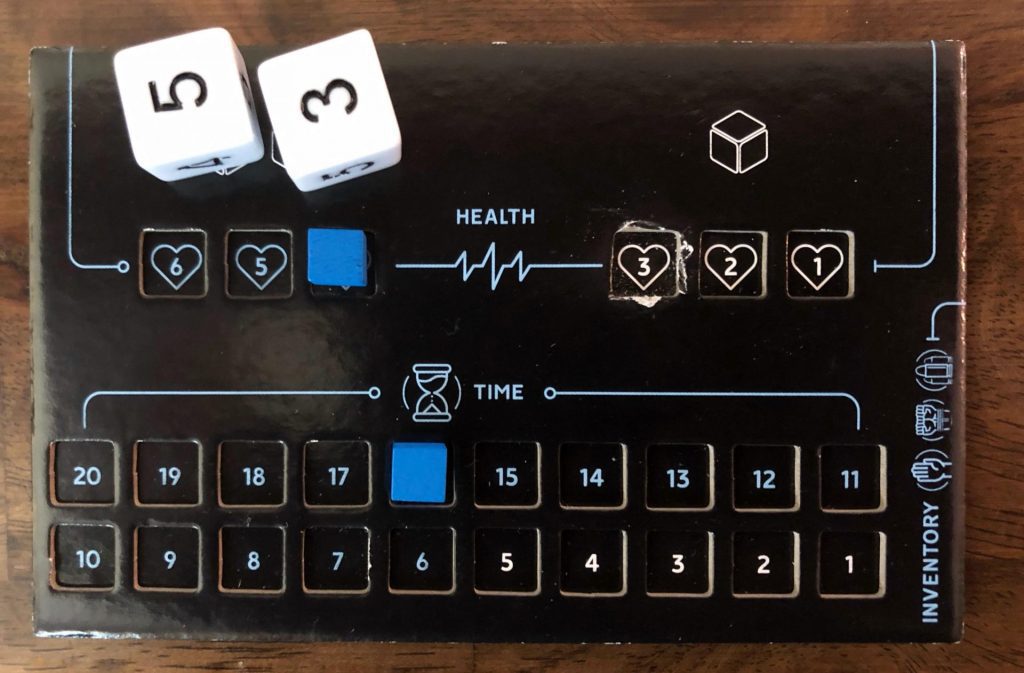
Navigating the Hunted deck is straightforward. On the player’s turn, they’ll flip the top card of the deck and place it in the Hunted row. Most cards have a variety of symbols in their upper-left corner as well as their bottom-right. Cards can be discarded from the row to “spend” the symbols in the upper-left in order to “buy” cards for the cost found in the bottom-right. Purchased cards might have an immediate effect or go to the player’s inventory for later use.
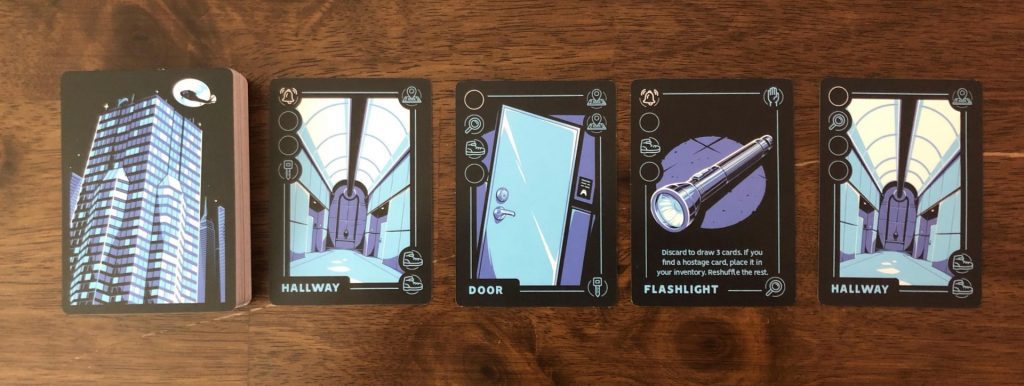
One immediate effect allows the player to reveal a new card from the Location deck. This is how the player advances through the game. Near the bottom of this second deck is the end-goal Location; when the player reveals this card they must complete a final challenge to win. The other Location cards have events which, when revealed, can impact the player. Many of these events offer a gain of resources on a success and a loss of resources on a failure.
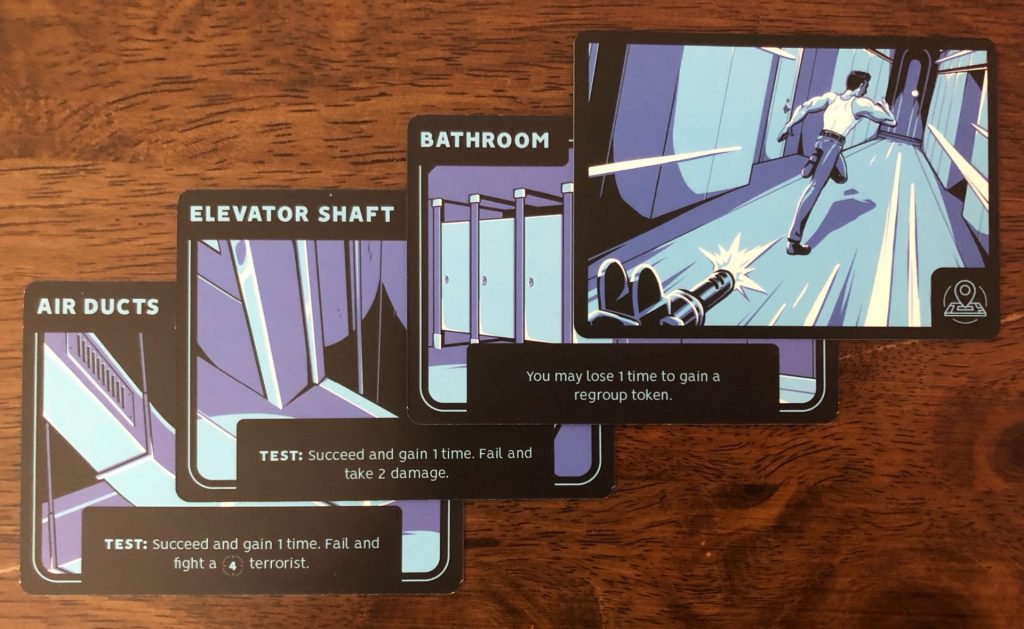
The Hunted deck also contains straightforward event-type cards — which generally require an immediate test using the title’s unique mechanic — as well as enemies. Enemies come in varying strengths and must be fought once activated. An enemy will activate under 2 possible circumstances: if a second enemy is placed in the Hunted row, the stronger one will activate; or if there are at least 2 “bell” icons and an enemy showing across all cards currently in the row. Whenever an enemy activates, all other cards in the row are discarded and the player must fight the enemy.
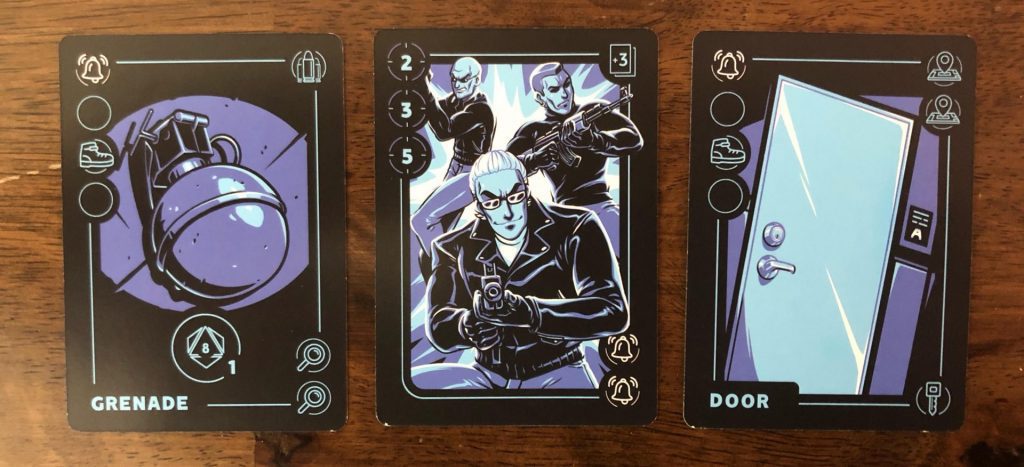
A player may choose to pay 1 Time to Hide on their turn, discarding the entire row instead of flipping a new Hunted card. This allows the player to eliminate possible threats before they can activate (either by discarding inactive enemies or cards with bell icons).
Now I Have a Machine Gun
As mentioned, Kobayashi Tower’s defining mechanic is dice-rolling. When faced with a test event or fighting a terrorist, the player will roll one or more dice in order to get a single die result equal to or greater than a specific number (5 for tests and variable for terrorists). Harder terrorists will require a set of either two or three dice of various values, with previous successes carrying over across multiple rounds of combat if needed.
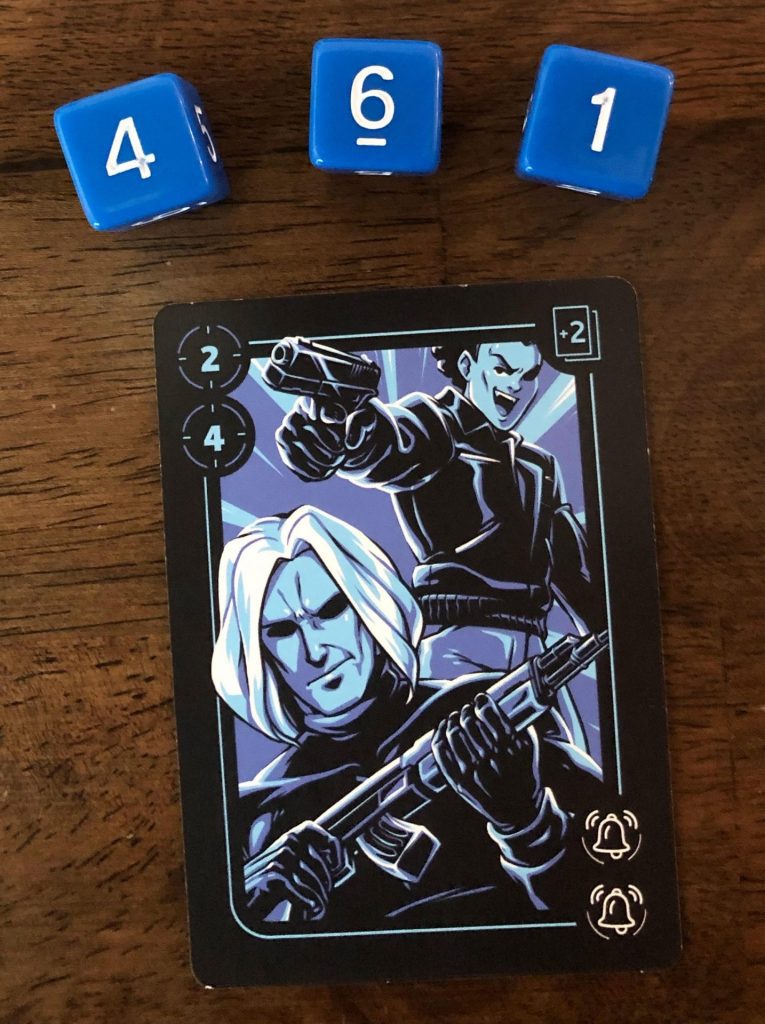
During each round of combat, the player spends 1 Time to fire their weapons, rolling any number of their available shot and/or grenade dice simultaneously. The default dice for all actions are 6-sided. However, more advanced weaponry allows the player to roll larger dice such as the d8 or even the mighty d10. (Due to a factory error some copies also came with a d12, which cannot be used with the game, much to my dismay.) The player can refill their pool of available dice to the weapon’s maximum (4 for the starting handgun) at any time by reloading; this costs both an ammo token and 1 Time. The default handgun has 3 ammo tokens to start, so there are a limited number of reloads available. The player loses the game if they run out of Health or Time.

If the player reaches the required number of successes they defeat the terrorist and discard it. In addition, they’ll draw cards based on the terrorist’s strength and keep one card of a few possible types (for example, saving a hostage adds a one-time ability, while picking up a new weapon offers better options for future combats). This makes combat a little more rewarding, rather than simply being a drain on the player’s limited resources.
There are, as one might expect, a few ways to mitigate a bad roll. Some cards in the Hunted and Navigation decks let the player spend Time to gain a Regroup token that adds a +2 to any one roll. Others allow the player to reroll one or more dice, and a select few add an additional die to a roll. All of these options keep the game from being entirely chaotic, though it still requires a bit of luck to win.

I’d Rather Be In Philadelphia
Based on my experience with Kobayashi Tower’s sibling, Mining Colony 415, I expected that Kobayashi Tower was going to be another easy home run for me. After all, they share the same art style, cinematic theming, navigation mechanic, and more. These two aren’t just siblings; they’re fraternal twins.
Kobayashi Tower is a very solid game. The Hunted system is as enjoyable here as it was in the other entry. The rulebook is a little bit cleaner. Thematically, I absolutely love the action-movie vibe and the small specific references to Die Hard, one of my favorite movies.

So why do I regularly reach for MC415 and leave Kobayashi Tower on the shelf?
The problem, I think, is that the game’s use of dice puts it up against some real heavy hitters. From Doom Machine to Under Falling Skies or even Too Many Bones, dice are a mainstay of many solo games. They’re comfortable, familiar, safe. Where Kobayashi Tower falls down is that it doesn’t really do anything novel with the dice. You roll them to deal damage and resolve events. You add your small bonuses or use your limited rerolls when you need to. Even when you graduate to a bigger die, letting you play with probability a little bit more, it doesn’t feel like much has changed.
Kobayashi Tower plays quickly and smoothly enough that I can almost ignore the lack of innovation. Unfortunately, I’m not inspired by it either. It’s difficult enough to get things I’m passionate about to the table. When there are so many great games available, is one that’s merely good sufficient?
The main character of Die Hard, John McClane, isn’t perfect. He’s a condescending, bullheaded jerk who struggles to express himself without snarky one-liners. Yet over time we see how these negative traits can also be positive: how his sense of humor helps him compartmentalize in moments of extreme danger or the way his stubbornness fuels his will to survive. The joy of the movie is that, as he faces his foes and his flaws, he finds in them the strength he needs to survive against impossible odds.
Kobayashi Tower is a fine game with no serious flaws. I only wish it had more strengths.


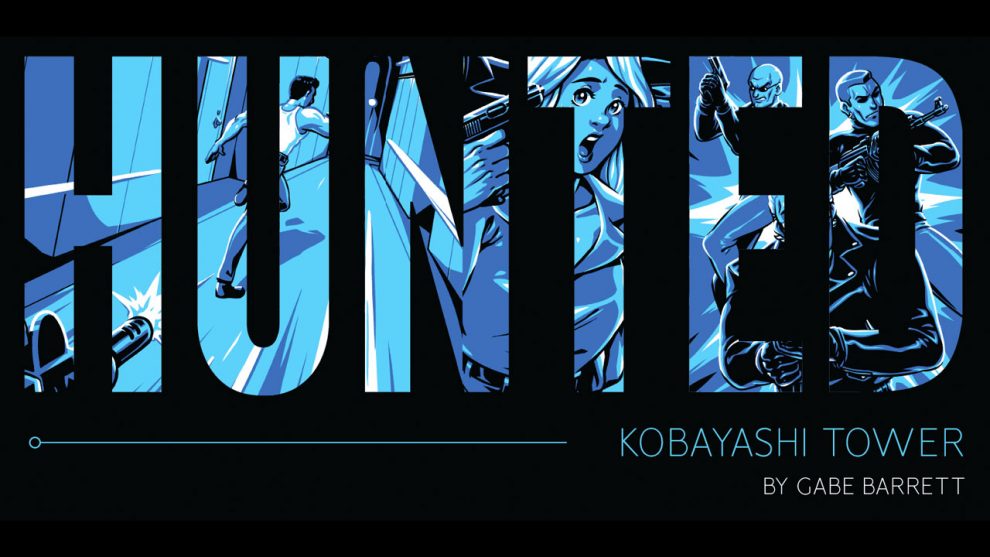









Add Comment